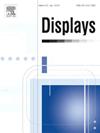Exploring Lottery Ticket Hypothesis in Neural Video Representations
IF 3.7
2区 工程技术
Q1 COMPUTER SCIENCE, HARDWARE & ARCHITECTURE
引用次数: 0
Abstract
Neural Video Representations (NVR) have emerged as a novel method for video compression, which encode video content into network parameters, transforming video compression into a model compression issue. In this paper, we attempt to introduce Lottery Ticket Hypothesis (LTH) into NVR, aiming to identify optimal sub-networks (, winning tickets) capable of effective representing corresponding videos. Firstly, we validate the existence of winning tickets within NVR and reveal that these winning tickets exhibit non-transferability across different videos. To balance heavy searching cost with training efficiency, we devise an Identifying Winning Tickets (IWT) method tailored for NVR. Additionally, leveraging the non-transferability of winning tickets and video frames redundancy, we design a Progressive Cyclic Learning (PCL) strategy to accelerate the searching winning tickets phase. Finally, comprehensive experiments are conducted to evaluate the performance and general properties of winning tickets across various NVR architectures and videos. The results demonstrate that our proposed method significantly outperforms the original pruning approach, achieving performance gains of 1.81 dB, 4.19 dB, and 3.5 dB at 90 % sparsity in NeRV, E-NeRV, and HNeRV, respectively.
求助全文
约1分钟内获得全文
求助全文
来源期刊

Displays
工程技术-工程:电子与电气
CiteScore
4.60
自引率
25.60%
发文量
138
审稿时长
92 days
期刊介绍:
Displays is the international journal covering the research and development of display technology, its effective presentation and perception of information, and applications and systems including display-human interface.
Technical papers on practical developments in Displays technology provide an effective channel to promote greater understanding and cross-fertilization across the diverse disciplines of the Displays community. Original research papers solving ergonomics issues at the display-human interface advance effective presentation of information. Tutorial papers covering fundamentals intended for display technologies and human factor engineers new to the field will also occasionally featured.
 求助内容:
求助内容: 应助结果提醒方式:
应助结果提醒方式:


